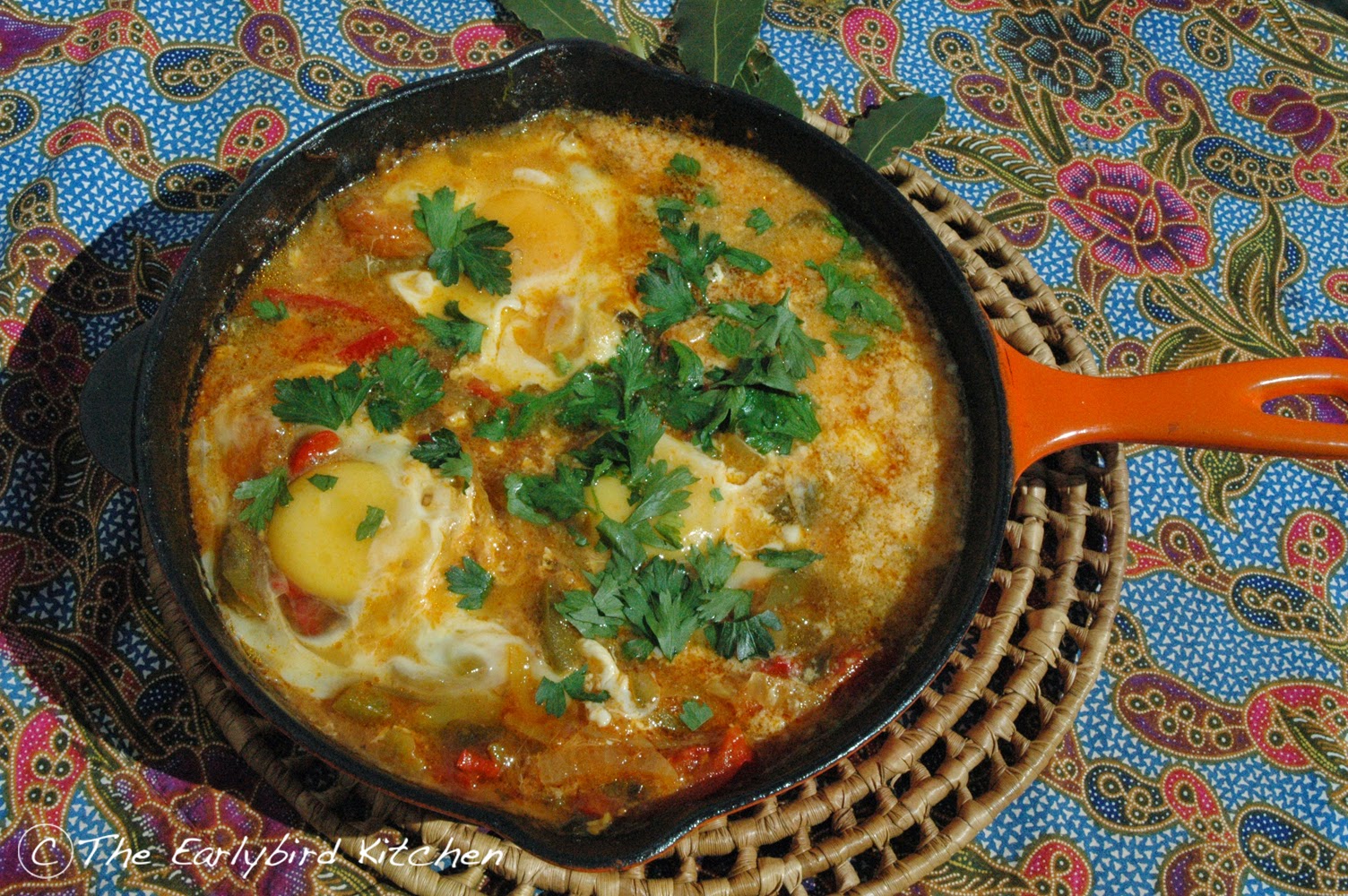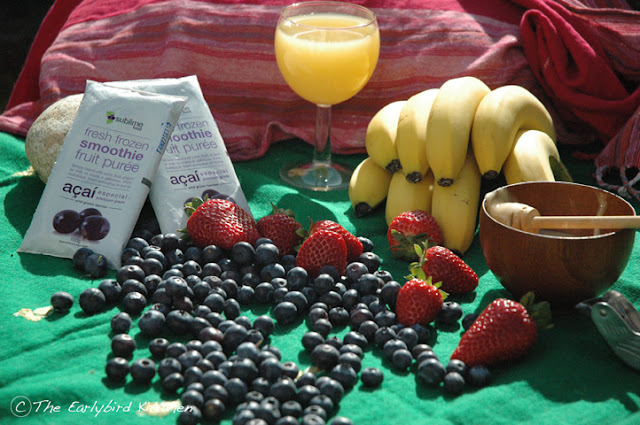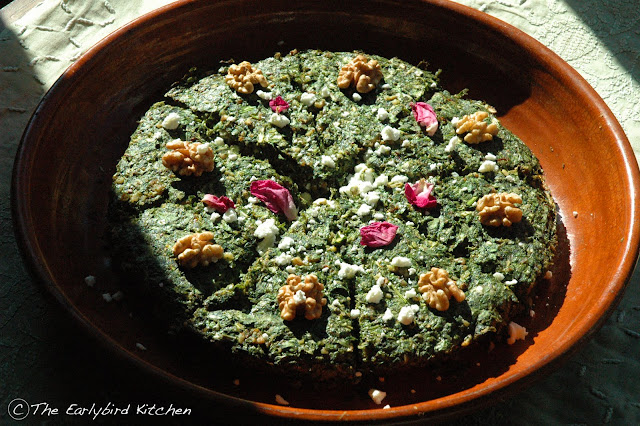Shakshuka
Shakshuka is a dish born of the spice route which snaked its way through the Maghreb on its way to the South Asian spice lands. A truly international dish that has touched each countries vegetable plot and spice box along its varied path. From Libya to Israel by way of Italy and Greece. Tunisia however claims its origin, citing its creation after tomatoes and peppers began to arrive there from South America and its name derives from the Berber language. Shakshuka translated means 'to mix up', describing this dish well. Each cook in each land added a little extra or took something away to suit their own particular taste and so the name and its ingredients altered as it arrived in each of the countries. In the Ottoman Empire it was known as 'sasuka', they added toasted cumin seed, in Libya, 'tchatchouka' and they liked a local spicy sausage and in Israel, 'shakshuka' was adopted by the Sephardic Jews as a dish which is 'parve', a term meaning neutral, food which can be eaten alongside milk, dairy, fish or meat. This led them to include yoghurt and fresh cheese in theirs. This has made shakshuka a very popular dish amongst Israelis who have in turn spread the dish in other directions on the planet, to places like Goa in India. It would not be unusual to be sitting in a beach bar in Anjuna and be able to eat an authentic shakshuka alongside some fresh chapatti and a masala chai these days.
Shakshuka is a popular breakfast dish in all of the countries it is prepared. Often claimed to be the greatest hangover cure of all and a meal often cooked by bachelors, morning, noon and night, as the one dish that they can cook and cook well. A welcome change from spaghetti bolognaise. The opener of 'Would you like to taste my shakshuka?' is said to be a popular chat up line throughout Northern Africa. Regardless of its popularity amongst ardent suiters the original base of this dish remains little unchanged, slow cooked yellow onions, with peppers and fresh tomatoes. It is the cooks hand that alters the flavours by the clever use of spice, some add saffron to the pan which imparts a layer of flavour and richness that only saffron is able, garlic for some but not others, chilli for most, coriander or parsley, spinach or chard, cheese or spicy sausage. Eaten for breakfast, lunch or supper this dish is one that can be prepared in advance, frozen into portions which can then be taken out the night before they are needed. The task then is to gently warm the sauce and add the eggs. A very easy dish to make and one that is complex in flavour.
The following shakshuka recipe is simple and takes a little from each culture, in my mind it is the freshness of the few ingredients which makes this work so well. Traditionally made in a heavy cast iron pan, which retains the heat, but any frying pan will do. This is my breakfast version, if I were to serve it for supper I may add in some garlic, a handful of kale, maybe use fresh coriander alongside flat leaf parsley and definitely add more chilli. For breakfast my version is a more gentle, sublime and a simpler affair. Accompanied by some warm crusty bread to mop up the inevitable juice this is a good start or end to anyones day.
Ingredients
1 tspn whole cumin seed
4 generous tblspns olive oil
2 large yellow onions, sliced finely.
2 large red peppers, sliced.
2 large green peppers, sliced.
1 tblspn honey
2 bay leaves
bunch of fresh flat leaf parsley
8 large ripe tomatoes
pinch saffron
1 green chilli, chopped finely.
4 fresh large free range eggs
sea salt and fresh cracked black pepper
water up to 200 mls to add as you are cooking.
Method
Toast your cumin seeds lightly in a warm dry cast iron pan until you can smell the fragrant oils being released. Pour in your olive oil, stir it around and put in your thinly sliced onions. Let them cook for about three minutes, stirring to prevent sticking. When they are soft add in your peppers and chopped chilli and let it cook down for about 5 minutes. I like the peppers to be long and thinly sliced too as it makes eating that bit more intrepid as you balance the sauce and egg onto the bread. Next put your saffron strands into a little warm water and let them infuse whilst you chop the tomatoes. Put them along with the saffron, bay, flat leaf parsley and salt and pepper into the pan. Trickle a little water in and let it cook on a high heat for 5 minutes. Stir to prevent it from burning for ten minutes and then reduce the heat for about 20 minutes. The consistency you are aiming for is like a ragu. Make little wells into the mixture and whilst keeping the heat low crack your eggs into these wells, carefully stir the whites into the sauce being careful not to break the yolks. Let them cook very gently for about 5 minutes or until the eggs are set. Sprinkle with parsley and serve.







Glad your back earlybird! xxx
ReplyDelete